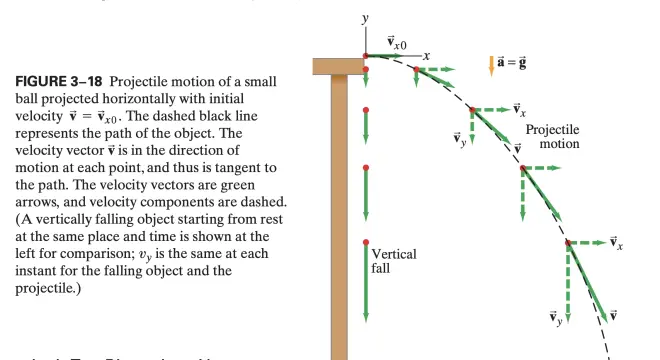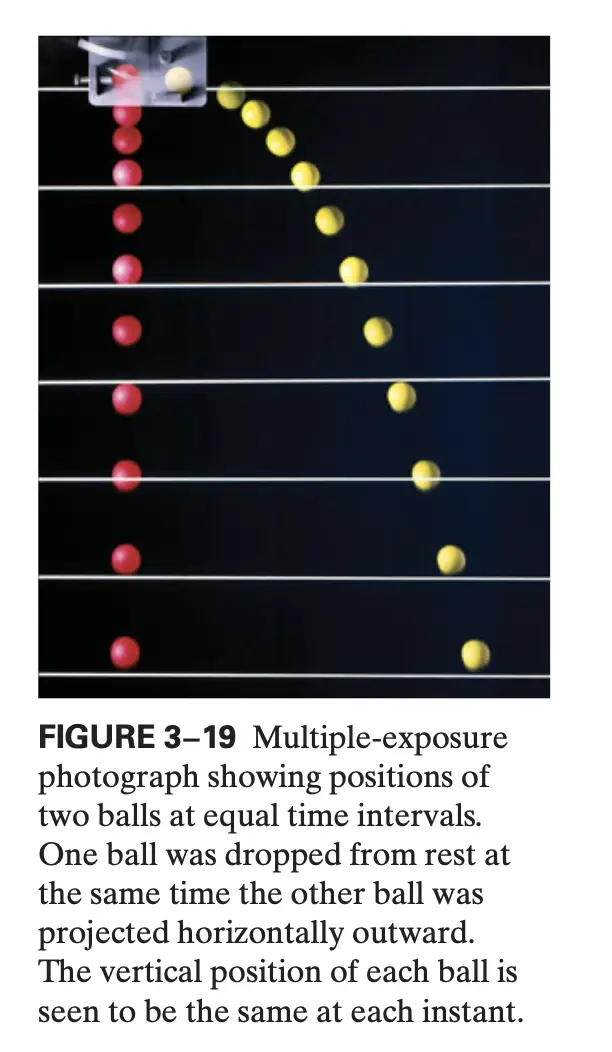Projectile Motion 弹丸运动(?)
哈喽~二维空间的运动来了鸭~

projectile motion:objects taking places in two dimentions if there is no wind.
Galileo was the first to describe projectile motion accurately. He showed that it could be understood by analyzing the horizontal and vertical components of the motion separately. For convenience, we assume that the motion begins at time t = 0 at the origin of an xy coordinate system (so x0 = y0 = 0).
Following Galileo’s ideas, we treat the horizontal and vertical components of velocity and acceleration separately, and we can apply the kinematic equations to the x and y components of the motion.
eg.:
First we examine the vertical (y) component of the motion. At the instant the ball leaves the table’s top (t = 0), it has only an x component of velocity.
Once the ball leaves the table (at t = 0), it experiences a vertically downward acceleration g, the acceleration due to gravity. Thus vy is initially zero Avy0 = 0B ,but increases continually in the downward direction (until the ball hits the ground). Let us take y to be positive upward. Then the acceleration due to gravity is in the –y direction, so ay = –g. From Eq. 2–11a (using y in place of x) we can write vy = vy0 + ay t = –gt since we set vy0 = 0. The vertical displacement 12 is given by Eq. 2–11b written in terms of y: y=y0 +vy0 +2ayt. 12 Given y=0,v =0,anda =–g,theny=–gt.

In the horizontal direction, on the other hand, there is no acceleration (we are ignoring air resistance). With ax = 0, the horizontal component of velocity, vx ,remains constant, equal to its initial value, vx0 , and thus has the same magnitude at each point on the path. The horizontal displacement (with ax = 0) is given by x=v t+1a t2 =v t

One result of this analysis, which Galileo himself predicted, is that an object projected horizontally will reach the ground in the same time as an object dropped vertically.This is because the vertical motions are the same in both cases, as shown in Fig. 3–18. Figure 3–19 is a multiple-exposure photograph of an experiment that confirms this.

If an object is projected at an upward angle, as in Fig. 3–20, the analysis is similar, except that now there is an initial vertical component of velocity, vy0 . Because of the downward acceleration of gravity, the upward component of velocity vy gradually decreases with time until the object reaches the highest point on its path, at which point vy = 0. Subsequently the object moves down- ward (Fig. 3–20) and vy increases in the downward direction, as shown (that is, becoming more negative). As before, vx remains constant.


到这里就结束了~谢谢阅读啊
三连是对我最大的支持

